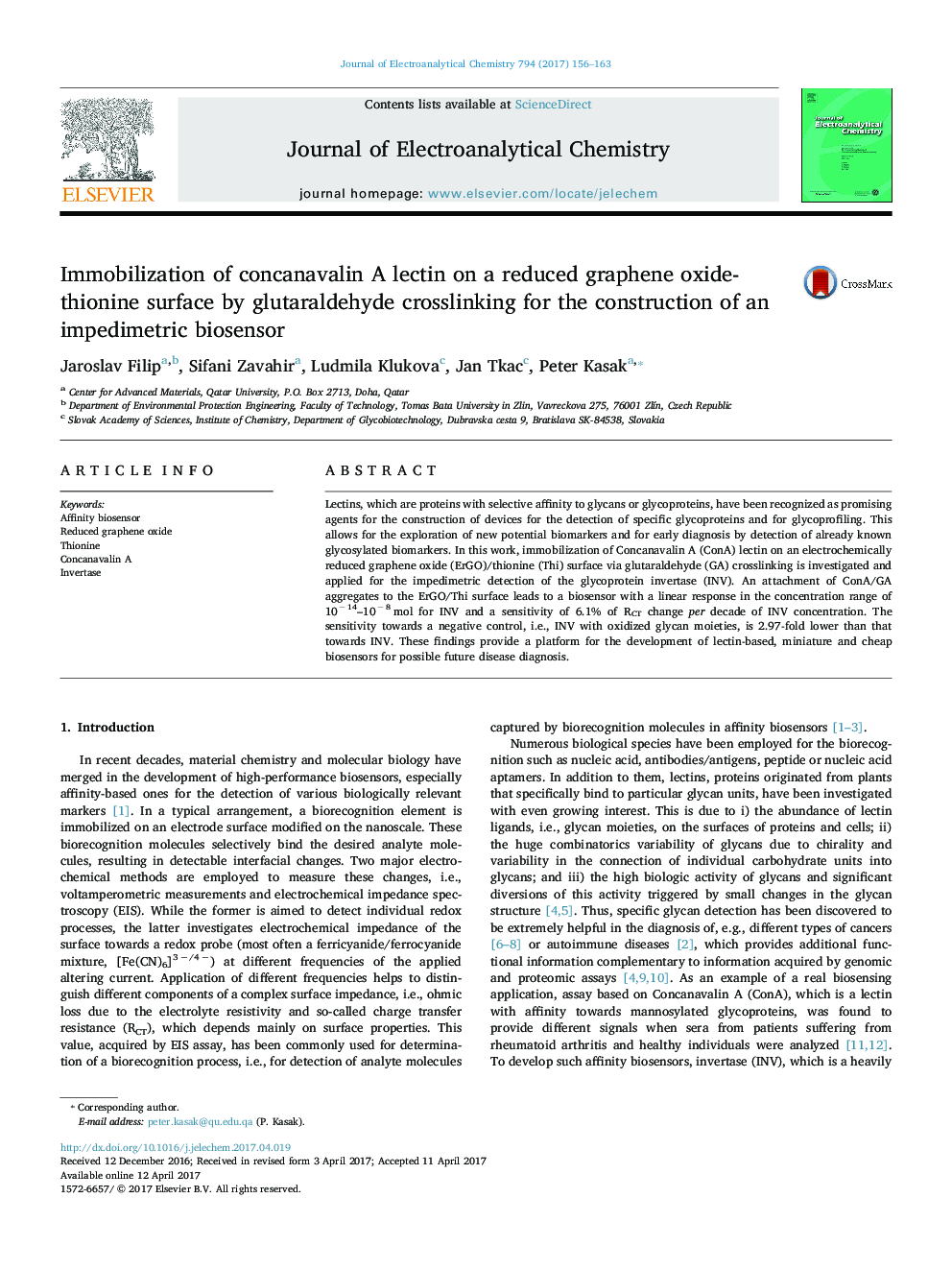| Article ID | Journal | Published Year | Pages | File Type |
|---|---|---|---|---|
| 4907866 | Journal of Electroanalytical Chemistry | 2017 | 8 Pages |
â¢ErGO-thionine platform with adjustable surface properties was studied.â¢Novel immobilization approach using a glutaraldehyde-crosslinked lectin was revealed.â¢The first demonstration of impedimetric biosensor with lectin immobilized on ErGO by thionineâ¢The lectin biosensor offered linear range spanning 6 orders of magnitude for invertase as an analyte.
Lectins, which are proteins with selective affinity to glycans or glycoproteins, have been recognized as promising agents for the construction of devices for the detection of specific glycoproteins and for glycoprofiling. This allows for the exploration of new potential biomarkers and for early diagnosis by detection of already known glycosylated biomarkers. In this work, immobilization of Concanavalin A (ConA) lectin on an electrochemically reduced graphene oxide (ErGO)/thionine (Thi) surface via glutaraldehyde (GA) crosslinking is investigated and applied for the impedimetric detection of the glycoprotein invertase (INV). An attachment of ConA/GA aggregates to the ErGO/Thi surface leads to a biosensor with a linear response in the concentration range of 10â 14-10â 8 mol for INV and a sensitivity of 6.1% of RCT change per decade of INV concentration. The sensitivity towards a negative control, i.e., INV with oxidized glycan moieties, is 2.97-fold lower than that towards INV. These findings provide a platform for the development of lectin-based, miniature and cheap biosensors for possible future disease diagnosis.
Graphical abstractDownload high-res image (231KB)Download full-size image
